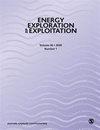Comparison of commingled and sequential production schemes by sensitivity analysis for Gulf of Mexico Paleogene Deepwater turbidite oil fields: A simulation study
IF 1.6
4区 工程技术
Q4 ENERGY & FUELS
引用次数: 0
Abstract
A commingled production scheme, where wells are simultaneously completed in multiple reservoir units, offers a cost-effective alternative worldwide. However, their behavior can be more complex than single-unit wells in sequential production. Limited completion studies exist for the unique Paleogene Gulf of Mexico fields. To aid decision-making, we conducted a numerical study using geological and reservoir models of Lower and Upper Wilcox units, based on publicly available data. Results show that commingled production maximizes per-well oil production compared to sequential schemes. Over 30 years, it provides 61% more oil recovery, and over 50 years, it yields 21% more. One-factor-at-a-time design of experiments sensitivity analysis identifies that key reservoir properties influencing oil recovery in both schemes are upper and lower unit thicknesses, facies proportion of the upper unit. Additionally, average permeability of the lower unit plays a significant role in sequential production schemes.墨西哥湾古近系深水浊积岩油田混采与序采方案的敏感性比较
在多个油藏单元中同时完井的混合生产方案,在全球范围内提供了一种经济有效的替代方案。然而,在连续生产中,它们的行为可能比单井更复杂。针对墨西哥湾独特的古近系油田的完井研究有限。为了帮助决策,我们根据公开数据,使用Lower和Upper Wilcox单元的地质和储层模型进行了数值研究。结果表明,与顺序采油方案相比,混合采油方案的单井产油量最大。在30年的时间里,它的石油采收率提高了61%,在50年的时间里,它的产量提高了21%。单因素一次实验灵敏度分析设计表明,影响两种方案采收率的关键储层物性是上、下单元厚度、上单元相比例。此外,下部单元的平均渗透率在后续生产方案中起着重要作用。
本文章由计算机程序翻译,如有差异,请以英文原文为准。
求助全文
约1分钟内获得全文
求助全文
来源期刊

Energy Exploration & Exploitation
工程技术-能源与燃料
CiteScore
5.40
自引率
3.70%
发文量
78
审稿时长
3.9 months
期刊介绍:
Energy Exploration & Exploitation is a peer-reviewed, open access journal that provides up-to-date, informative reviews and original articles on important issues in the exploration, exploitation, use and economics of the world’s energy resources.
 求助内容:
求助内容: 应助结果提醒方式:
应助结果提醒方式:


